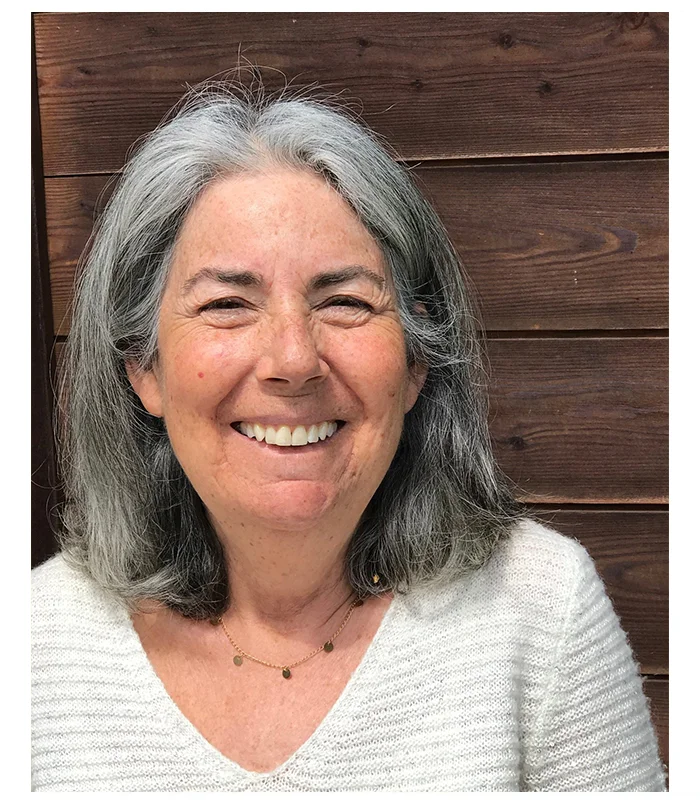Most people who are diagnosed with WM don’t need treatment straight away and will on active monitoring. You’ll be linked with a healthcare team who will monitor your symptoms and take blood test regularly to assess your health.

WM develops very slowly and often doesn’t need to be treated immediately. Treatment has harsh side effects and there is no evidence that being treated earlier has any benefits. Through active monitoring, your healthcare team will monitor your health and delay treatment until it can have the maximum impact.
Once you’ve been diagnosed, you’ll have regular blood tests as part of your active monitoring. Doctors are looking for changes in your blood thickness, blood count and protein levels, which could be an indicator that your WM is changing and you need to start treatment.
WM patients are supported by a team of healthcare specialists, with specific expertise, who work together to plan your care. This team is called a multidisciplinary team (MDT). It is usually led by a clinical nurse specialists (CNS) and may include dietician, haematologist and physiotherapist.



A new WM diagnosis can be overwhelming, but we are here to help. You can call our confidential phone service and speak a WM expert about any aspect of your diagnosis. You can also call if you are concerned about a family member, loved one or employee who has WM.
Call us on 0300 373 8500 Monday-Thursday 9am – 5pm or email support@wmuk.org.uk and we’ll respond within 48 hours.

WM can cause a number of other conditions to develop, some of which are more common, and some which are very rare. The symptoms vary for each condition and will also be different for every individual. It’s important to let your healthcare team know about any symptoms you have, so they can investigate.
There is no cure for WM, however there are a number of treatments which help to reduce the number of WM cells in your body. These include chemotherapy, monoclonal antibody therapies and targeted therapies.
There are no specialist WM treatment centres in the UK, but there are a handful of WM expert clinicians. So, while you may be treated at your local hospital, you may also receive support from a WM expert.
A WM diagnosis doesn’t just impact your physical health it can also impact your mental health, work life, family and your overall wellbeing. The good news is, there is plenty of support available to help you navigate your journey.
Get the answers to come of the most commonly asked questions relating to WM.
Waldenstrom’s macroglobulinaemia (WM) is a rare type of blood cancer.
It happens when a certain type of blood cell doesn’t develop properly.
You can find out more about What is Waldenstrom’s macroglobulinaemia, the symptoms and how it develops throughout this website.
We know, it’s a mouthful. That’s why most of us refer to it as ‘WM’ or ‘Waldenstrom’s’ (and people with WM, ‘WMers’ or ‘Waldies’). If you do want to use the full name though it is pronounced:
WAL-DEN-STROMS MA-CRO-GLO-BEW-LI-NEE-MEE-AH
Sometimes, lymphoplasmacytic lymphoma (LPL) and WM are used interchangeably but they are in fact different diseases that are related. If you’re not sure which you have, check with your doctor to confirm.
In both LPL and WM, a type of white blood cell called a B-cell develops incorrectly. These abnormal cells crowd out healthy blood cells. This means the healthy cells can’t do their work, leading to some of the symptoms experienced by both people with LPL and WM.
However, in people with WM these abnormal B-cells also produce abnormal levels of a type of antibody called IgM. These levels aren’t seen with people with LPL.
In short, WM is a form of LPL.
There isn’t a cure for Waldenstrom’s macroglobulinaemia at the moment. However, there are several treatments that are effective at getting rid of the abnormal cells that cause WM. Many WMers will go into remission, or partial remission after receiving treatment. This is where the levels of abnormal cells have been dramatically decreased, and their symptoms have either gone away or have decreased as much as possible. Because Waldenstrom’s macroglobulinaemia is a slow-growing cancer, it can take years for the abnormal cells to build up to point where they create symptoms again.
Hearing that you have a cancer diagnosis can be scary, and this question is often one of the first people who are diagnosed with WM ask.
Whilst it’s true that there isn’t a cure for WM, this doesn’t mean that you will die soon. WM isn’t like other cancers you may have come across. It doesn’t grow or spread quickly, and it isn’t aggressive.
WM is what is known as a slow-growing cancer, which means that it takes time for abnormal cells to build up to a point where it starts causing symptoms or impacting on how other parts of your body function.
You might find some figures for life-expectancy on website or in other information. However, these numbers can be misleading. Firstly, WM is a disease that often affects people much later in life, something that can skew data to show a shorter life expectancy. Secondly, life-expectancy is individual and depends on many factors including your age, your general health, how well you respond to treatment, and your lifestyle. These factors are not reflected in basic life expectancy figures. On top of this, because it takes many years to collect this type of data, available statistics are already out of date when they are published. This is often thanks to new treatments meaning that people live much longer and better quality lives. Try not to take any figures you read to heart. If you’re concerned, talk to your healthcare team about your individual circumstances.
With expert care and treatment, many WMers live full lives for years, even decades. Once the cells have grown to a point that you are feeling unwell, there are treatments that can kill off the abnormal cells and return you to better health. Some WMers might have two or even three rounds of treatment over the course of many years.
Because WM is so slow-growing, people with WM are more likely to die from other causes or conditions related to WM – for example being more susceptible to infections – than they are to die from WM itself. This is why it’s important to discuss your symptoms with your doctor and to take precautions to protect yourself against infections and viruses.
The most common treatment for WM is chemotherapy. This type of treatment has proven to be very effective at killing WM-causing cells and is widely used to treat the disease.
Newer treatments are also becoming available, which provide potentially kinder options to people with WM.
Read more about all the types of treatment you might come across
Some types of cancer are fast-growing, meaning that the cancer cells are multiplying very quickly and the person’s health and even life are at risk if they don’t have immediate treatment.
WM isn’t like this. The cells that cause WM are slow to grow and multiply, meaning the disease develops slowly. If your blood tests show that the levels of abnormal cells in your body are low, and your symptoms are minimal, you doctor might choose to postpone treatment.
Treatment can often come with harsh side effects that are sometimes worse than WM symptoms themselves and can have a long-term impact on your health. There is no evidence to suggest that being treated early improves your quality of life or extends your life expectancy. Therefore, it’s best to wait until your WM is at a stage where it needs treatment.
If you aren’t having treatment, you’ll go on what’s called ‘active monitoring’. This is sometimes called ‘watch and wait’. During active monitoring, you will regularly see your healthcare team who will take blood tests and discuss any symptoms you might have. This will help them understand how your WM is progressing and whether you need treatment.
Active monitoring can be difficult. You might be worried about upcoming test results, scared about going on treatment, or feeling like you should be on treatment to deal with the WM cells already in your body. We have more information about active monitoring, including ways to deal with it, here.
There are several doctors who specialise in treating Waldenstrom’s macroglobulinaemia, however there aren’t specific specialist centres.
Because WM is so rare, it needs expert knowledge to treat. The British Society for Haematology guidelines (which give doctors guidance on how to treat and care for people with WM) recommend that doctors refer to or work with WM specialists to treat their patients with Waldenstrom’s macroglobulinaemia.
If you have any questions about your treatment, or where you are being treated, please contact us and we can advise you: support@wmuk.org.uk
Waldenstrom’s macroglobulinaemia may bring about changes to your life. You might need to take extra precautions to protect yourself against illness when out and about or find yourself unable to participate in sports activities you once enjoyed, especially if your symptoms are getting worse.
However, this isn’t to say that you still can’t live life to its fullest. With expert care and some adjustments, many people with WM find themselves getting back to the activities they used to enjoy before their diagnosis. Read our WM Patient Stories for more first-hand experience
We’re here to help you live a full life with WM, by providing you with the information and support you need. Find out more about living with Waldenstrom’s macroglobulinaemia.
Yes, as someone with WM you’ll be more at risk from infections and viruses like COVID-19, shingles, and pneumonia.
WM occurs when a type of blood cell called a B-cell develops incorrectly. Healthy B-cells play an important role in fighting infection. Therefore, when they don’t develop correctly, they can’t do this job and leave you more at risk of becoming ill.
As someone with WM, you’re classified as ‘clinically extremely vulnerable’. This means you’re entitled to extra COVID-19 vaccinations and should be able to access treatment should you test positive for the virus. You can find all the most up to date information about COVID-19 on our dedicated pages.
Read our Living Well with WM section for more information on other vaccinations, like flu and shingles.
B-cells produce cells called antibodies which fight infection. These antibodies are made up of proteins. IgM is the largest type of protein. You may also hear it called:
When you have WM, your body produces abnormal B-cells, which then go on to produce large amounts of abnormal IgM. The high levels of abnormal IgM make your blood thicker (known as hyperviscosity) and cause symptoms like headaches, dizziness, shortness of breath, eyesight problems, nose bleeds, gum disease and chest pain. Seeing abnormal IgM in your blood tests is a key part of being diagnosed with WM.
Your doctor will monitor your abnormal IgM through blood tests, as not only can hyperviscosity be a serious condition, but the levels of abnormal IgM can help your doctor understand how your WM is progressing or reacting to treatment.
Together with other blood tests, and assessing your symptoms, doctors use IgM levels to work out whether you need to start treatment or remain on active monitoring.
Your healthcare team should explain what your blood test results mean for you.
Usually blood tests will show a ‘normal’ range alongside your individual results. Having a number higher or lower than this range might indicate you might have a health issue.
However, results are individual and blood tests only tell one side of the story. Symptoms play a big part in helping your doctor understand how your WM is progressing. This is why your doctor will pay real attention to your symptoms as a way of deciding if you need treatment or not.
If you’re worried about your blood test results, you should speak to your healthcare team.
You can read more about what blood tests mean in our After Diagnosis section.
There is some evidence to suggest that people with a close family member who was diagnosed with blood cancer that affects the B-cells are at a greater risk of developing Waldenstrom’s macroglobulinaemia. There currently aren’t any tests to tell if any of your family members will develop WM.
You may be worried that your children or other close family members are now at risk. Remember that WM is very rare. This means that even though the risk of developing WM is higher for your close family members than the general population, this risk is still extremely low.
It’s also important to bear in mind that Waldenstrom’s macroglobulinaemia usually develops in people later in life (over 65 years). There are so many new and kinder treatments on the horizon, and these may well be widely available if your children were to develop it in the future.
You may be worried about the financial impact of your diagnosis. For example, you might need time off work for treatment or find that you can’t work as many hours as you were used to, affecting your income.
There are benefits and grants available, to support you financially. You can find out what help you might be entitled to on Macmillan website.
Telling loved ones that you have cancer can be hard. However, talking about your diagnosis can help you feel better, even relieved. By sharing your diagnosis and experience, you may feel less alone.
Here are some tips that might help you talk with family and friends:
Start the conversation gradually – instead of diving in with ‘I have cancer’, try to use phrases like ‘I have been to see the doctor’ or ‘You might know that I’ve been feeling unwell for a little while’ to help prepare the other person for your news
Go slowly and give them time to ask questions. They might need time like you did to process the information and understand what it means
Be truthful. You might be tempted to sugar-coat any facts to help them feel better. However, this could mean even more difficult conversations down the line when they find out the truth
Talk about your feelings, and let them do the same. It can be tempting to act cheerfully to help them feel better, but it is better for you both to talk openly about how you feel about the diagnosis so that they can support you better
Make sure they understand your boundaries. You might not feel ready to talk in detail about certain aspects of your diagnosis, especially if the person you’re telling isn’t a close friend or relative. Or you might only want to tell close family for the time being and don’t want others finding out. If you have any requests like this, make them clear so that the other person understands and can support you
Ask for and accept support. The chances are you’re going to need some help at some point in your Waldenstrom’s macroglobulinaemia experience, for example when you have treatment. Family and friends may openly offer support, which means you can have further conversations about what needs you have or may have in the future. If they don’t offer, don’t be afraid to ask – they might not want to seem overbearing, or simply don’t know how to offer help
If you are talking to children, there are lots of resources that can help you broach the subject in a way that they will understand, like picture books. Lymphoma Action has more information about talking to children.
You might be nervous about telling your work about your WM, in case they are not supportive or make you redundant because of your diagnosis. There are laws to protect you against this kind of behaviour. As someone with WM, the law recognises you are having a disability. This means that your work cannot treat you less favourably because you have cancer.
In fact, it’s a good idea to speak to your manager or HR department as soon as you can after your diagnosis. Your work must make what are known as ‘reasonable adjustments’ to allow you to keep on working. These could be changing your shifts so that you are not on your feet for long periods of time, or allowing you to work from home to protect you from COVID-19. By discussing your individual needs with your employer, you’ll help them to understand your situation and ensure that you can continue working.
If you feel okay at the moment, it’s still a good idea to tell your work about your diagnosis. You can explain that your WM isn’t affecting you for the time being, but it gives them time to prepare in case you do start to feel ill or need time off for hospital appointments.
Read more about working with WM.
You might find that you feel alone in your diagnosis, even if you are talking openly with family and friends. This is common amongst WMers, because it’s such a rare cancer and very few people know what it is.
You are not alone, though. There is a positive and thriving WM community, made up of people living with the disease, their friends and families all sharing experiences and first-hand advice of life with Waldenstrom’s macroglobulinaemia. You can find them through our closed Facebook group, email forum and virtual support groups.
Find more information in our Waldenstrom’s macroglobulinaemia Support Groups.
If you’d like to speak to our Support Team about any aspect of WM, diagnosis, symptoms, treatment or ongoing support, get in touch with our Support Line.
Call us for FREE anytime Monday-Thursday 9-5pm to speak to someone right now.
Email support@wmuk.org.uk and we’ll get back to you within 48 hours.